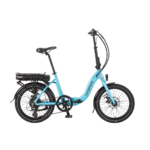There's no simple way to say this.
The relationship of the motor sprocket and chainwheel is little changed at 7% slower chainwheel speed at a given motor sprocket speed, so of little consequence.
As Dave (d8veh) has said the motor drive to rear wheel gearing has increased slightly with the slight loss of torque that he mentions, but again the change there is small at only 9%, more than easily compensated for by changing down one gear. With any Nexus gear hub that will reduce gearing by around 14%, depending on the gears changed between, so a slight around 5% overcompensation.
Whether you notice any loss of torque in any existing choice of gears though depends on the year of your Agattu and your preferred cadence when climbing. However, paradoxically the change in chainwheel cadence that I mention at the outset won't affect that since the unit measures the cadence at the motor sprocket output speed, making an assumption of a standard chainwheel to motor sprocket ratio. So the following will determine if there is a loss of torque.
The Agattu's Panasonic units roughly pre 2011 had the declining power with cadence as it exceeded 40 rpm, so if your motor sprocket speed was typically at a higher than 40 rpm cadence before, the fall in motor sprocket speed relative to the rear wheel at any given speed will be compensated for by the increase in power that the unit gives as the motor sprocket speed falls towards the 40 cadence equivalent of the pre sprockets change speed.
Calculation shows that the 9% increase of your motor to rear wheel gearing from the 41/12 change will produce a power increase of 29% at speeds between 10 and 14.5 mph, so that's the even bigger paradox with those earlier models. The loss of 9% is compensated at a given speed by the 29% power increase, leaving you at a given speed with 20% more climb power now after the change!
However, remember that this doesn't apply to the later and current models that retain full power to nearly the cutoff speed. With those there is the 9% power loss due to the sprockets change, leaving you with the choice of you supplying that much extra to maintain a given speed or changing down and you supplying 5% less effort at the road speed reduction corresponding to the hub gear ratio change down.
Phew!

.






